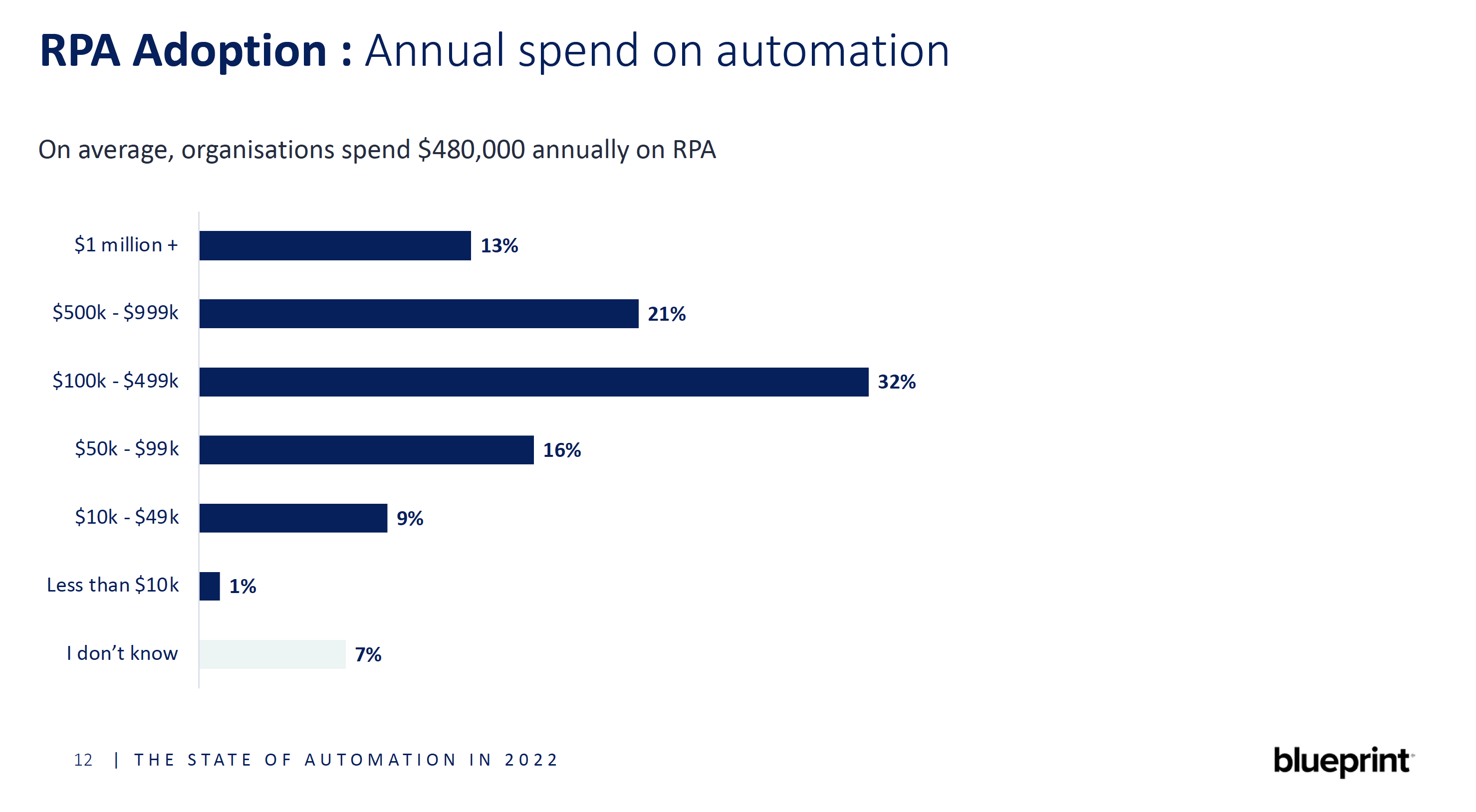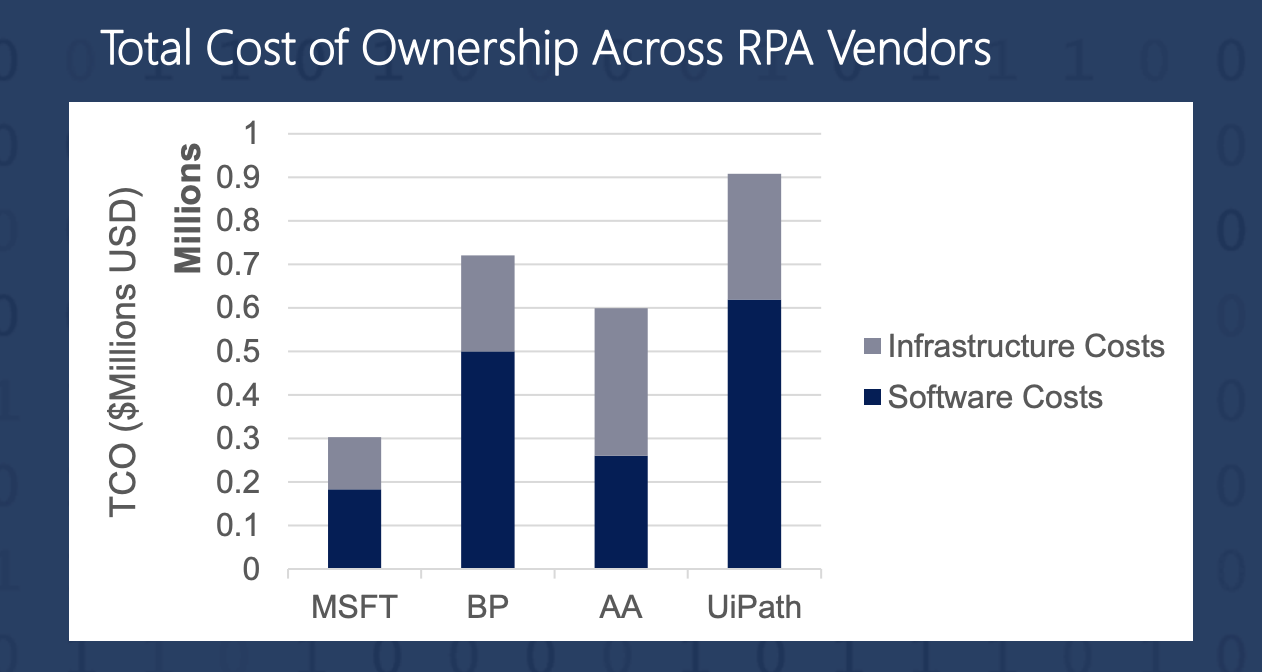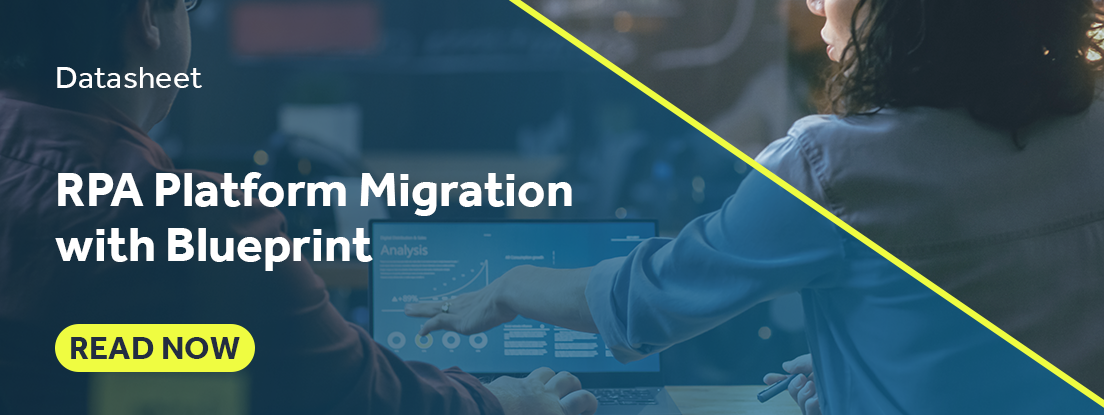How to Build an RPA Migration Business Case
With more cost-effective and powerful intelligent automation platforms like Microsoft Power Automate and Automation Anywhere A360, there is increasing interest from companies to switch RPA providers.
Despite the overwhelming motivation to migrate RPA estates, there are considerable barriers that can sometimes ground a migration project before it even gets off the ground. That’s why building a strong business case for RPA migration to get executive buy-in is so important.
Here are the biggest obstacles that prevent RPA migrations and how to overcome them.
4 Obstacles Preventing RPA Migrations
1 - Return on Original Investment
All companies that have adopted RPA originally made a significant investment to procure the technology and resources to implement automation. Ideally, the best time to make a switch to another automation platform is when your legacy RPA solution is due for renewal or about to expire. If it isn’t, then additional resources are needed as you procure a new, next-generation intelligent automation solution.
For that reason, your new, destination automation platform must offer significant cost and operational savings to justify additional investment.
2 - Project Management and Governance
The organization, planning, and resources needed for a large-scale RPA migration could be significant, especially considering that many organizations try to tackle migration projects manually.
The key is to find the technology that can facilitate switching RPA vendors. Purpose-built RPA migration solutions like Blueprint radically minimize the effort and cost associated with migrations to offset the resources needed to migrate. In addition, next-generation intelligent automation platforms like Microsoft Power Automate and Automation Anywhere’s Automation 360 offer intuitive, user-friendly solutions that empower a citizen development approach to automation, increasing the ability to scale and reducing the demand on expensive, highly technical resources to deliver automation.
3 - Operational Continuity
Organizations switching automation platforms will need to have both platforms operational for some time to ensure continuity as they move RPA estates from the original tool to the destination solution. This could incur added costs that might deter migration initiatives.
Once again, RPA migration technology like Blueprint that offers feasibility assessments – showing how much of an estate is already compatible with the destination platform – dramatically reduces the time and cost of parallel runs during migrations to keep the financial overhead to a minimum.
4 - Training
Training automation teams or RPA Centers of Excellence on using new automation platforms could also incur added costs or even employee resistance, which can be a barrier to switching RPA vendors. That’s why it’s important to migrate to an intelligent automation solution like Microsoft Power Automate that offers a UI all users are already familiar with, intuitive drag-and-drop canvasses, and pre-built connectors that accelerate the learning curve and fast-track automation design and delivery.
The 4 Components of an RPA Migration Business Case
A business case for an RPA migration details the current state of your automation operations and projects the benefits you will realize when switching to another RPA vendor to acquire executive sponsorship and buy-in.
These four components should be included in every business case for an automation estate migration.
1 - Define the Scope
The scope of the migration needs to be defined in terms of the destination platform, the technical considerations, and the financial resources needed for migration.
For example, in this step of building a business case for RPA migration, you should define:
- the destination platform that you’re moving to
- the size of your automation estate (that is, all the automations in your portfolio) that you plan on migrating
- how you plan on migrating your automation estate (manually or automatically with the help of an RPA migration solution)
- and how much the migration will cost
Regarding the last two points to define in this phase of building your business case, a manual migration can cost upwards of $20,000 per automation. Using a solution like Blueprint saves 60-75% of those costs.
2 - Operational Expense Baseline
To determine the cost reduction and returns that will be realized by switching RPA vendors, this component of the business case focuses on establishing how much your automation practice costs to run today.
According to recent Blueprint research, companies on average spend $480,000 annually on RPA with those in the highest tiers (making up 13% of all respondents) reportedly spending more the $1 million on automation per year.

These operational expenses include licensing fees for the automation platforms being used, any utilization costs associated, and the FTEs (full-time employees) that manage automation.
3 - Projecting the Future Cost of Automation
In this step of your business case, you project how much your automation practice will cost to run on your new, destination RPA platform and compare that to your current overhead, highlighting the cost savings you will realize.
This is arguably the most compelling and important component of your business case for RPA migration since cost reduction is a perennial high-level business objective for all companies.
Again, licensing, utilization, and internal resources need to be taken into account, however, with cost-effective tools like Microsoft Power Automate that offer significant savings from a licensing and infrastructure standpoint, this part of the business case can be incredibly potent.

4 - Projecting the Timeline and Cost of RPA Migration
In this last step, quotes for how long the migration of your automation estate to your destination RPA platform will take and how much it will cost are provided.
As previously mentioned, migrating manually will run you roughly $20,000 per automation and take 4-6 weeks to complete. With Blueprint, those costs and timelines are slashed by 60-75%.
If you’re interested in learning how Blueprint can accelerate RPA migrations while minimizing costs, watch this short explainer video below or talk to one of our solutions experts for a free consultation.
Share this
Recent Stories

Microsoft Power Automate Solutions for Automation Challenges

How to Calculate the Cost of Automation Re-platforming


